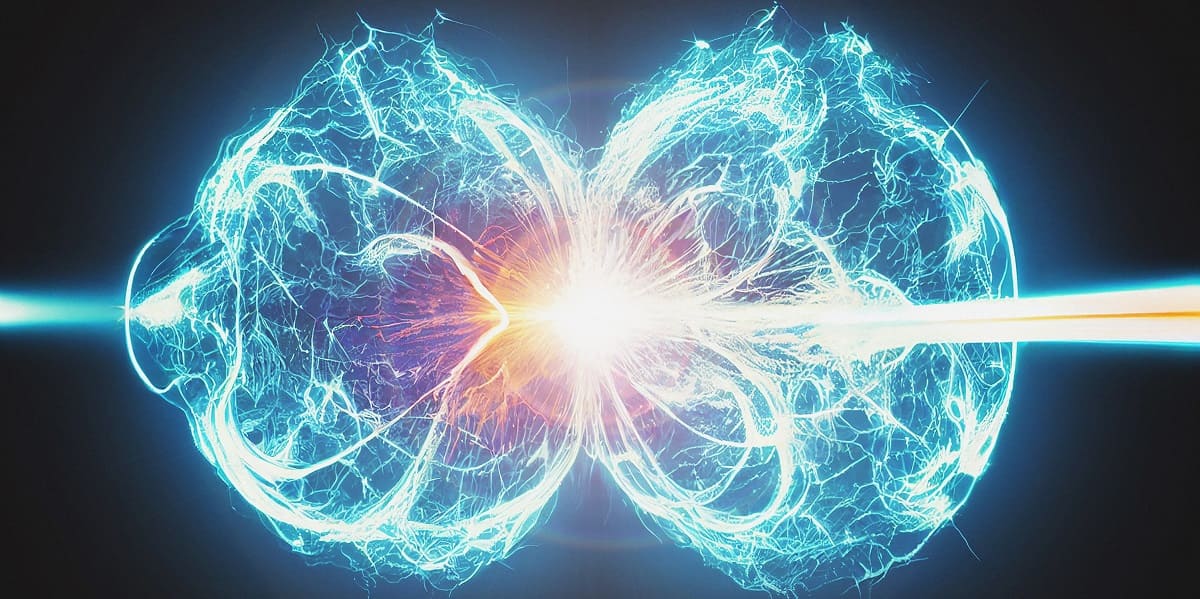Home>Education & Research>Understanding Nuclear Fusion: A Comprehensive Guide


Education & Research
Understanding Nuclear Fusion: A Comprehensive Guide
Published: February 19, 2024
Discover the principles and applications of nuclear fusion in this comprehensive guide. Explore the latest advancements in education and research in the field. Gain a deeper understanding of this groundbreaking technology.
(Many of the links in this article redirect to a specific reviewed product. Your purchase of these products through affiliate links helps to generate commission for Temperatures.com, at no extra cost. Learn more)
Table of Contents
Introduction to Nuclear Fusion
Nuclear fusion, the process that powers the sun and stars, holds immense potential as a clean and virtually limitless source of energy. Unlike nuclear fission, which involves splitting atoms, nuclear fusion generates energy by fusing atomic nuclei together. This process releases an extraordinary amount of energy and produces minimal radioactive waste, making it an attractive prospect for addressing the world's growing energy needs while mitigating environmental impact.
At its core, nuclear fusion involves the fusion of light atomic nuclei, typically isotopes of hydrogen, to form heavier elements. The most promising fusion reaction for energy production is the combination of isotopes of hydrogen, deuterium, and tritium, which results in the formation of helium and a high-energy neutron. This reaction releases a substantial amount of energy, which can be harnessed to generate electricity.
The fundamental principle behind nuclear fusion is the utilization of the strong force, which binds atomic nuclei together, to overcome the electrostatic repulsion between positively charged nuclei. Achieving the conditions necessary for nuclear fusion on Earth requires recreating the extreme temperatures and pressures found in the cores of stars. This is typically accomplished using high-energy lasers, magnetic confinement, or inertial confinement techniques.
The potential of nuclear fusion as a clean and sustainable energy source has garnered significant attention from the scientific community and policymakers worldwide. It offers the promise of abundant energy without the greenhouse gas emissions and long-lived radioactive waste associated with conventional nuclear fission and fossil fuel-based power generation.
As research and development efforts continue to advance, the prospect of achieving practical nuclear fusion for power generation becomes increasingly feasible. However, significant scientific and engineering challenges must be overcome to realize the full potential of this transformative energy source.
In the following sections, we will delve deeper into the scientific principles, historical context, challenges, applications, and ongoing research in the field of nuclear fusion, shedding light on its potential to revolutionize the global energy landscape.
The Science Behind Nuclear Fusion
Nuclear fusion, the process that powers the sun and stars, is a remarkable phenomenon rooted in the fundamental forces of nature. At its core, nuclear fusion involves the merging of light atomic nuclei to form heavier elements, releasing an extraordinary amount of energy in the process. This transformative reaction is governed by the principles of quantum mechanics and the fundamental forces that bind atomic nuclei together.
The most promising fusion reaction for energy production involves the fusion of isotopes of hydrogen, particularly deuterium and tritium. When these isotopes combine, they form helium and a high-energy neutron, accompanied by the release of a substantial amount of energy. This reaction, known as the deuterium-tritium fusion reaction, holds immense potential for generating clean and abundant energy.
The key challenge in achieving nuclear fusion on Earth lies in overcoming the electrostatic repulsion between positively charged nuclei. This barrier is surmounted by harnessing the strong force, one of the fundamental forces in nature, which binds atomic nuclei together. To initiate and sustain nuclear fusion, extreme temperatures and pressures are required to bring the nuclei into close proximity, allowing the strong force to prevail over the electrostatic repulsion.
In the quest to recreate the conditions necessary for nuclear fusion, scientists and engineers have developed innovative approaches, including magnetic confinement and inertial confinement. Magnetic confinement involves using powerful magnetic fields to confine and control the hot plasma, a state of matter in which atoms are stripped of their electrons, enabling the fusion process to occur. Inertial confinement, on the other hand, utilizes high-energy lasers to rapidly compress and heat a small pellet of fusion fuel, initiating the fusion reaction.
The achievement of the conditions required for nuclear fusion on Earth represents a remarkable feat of scientific and engineering ingenuity. It necessitates the creation of extreme temperatures exceeding tens of millions of degrees Celsius, as well as the generation of pressures comparable to those found in the cores of stars. These extraordinary conditions are essential for initiating and sustaining the fusion reactions that yield copious amounts of energy.
The scientific pursuit of nuclear fusion is underpinned by a deep understanding of plasma physics, nuclear reactions, and the behavior of matter under extreme conditions. It requires the convergence of expertise from various scientific disciplines, including physics, engineering, and materials science, to overcome the formidable challenges associated with harnessing fusion energy for practical applications.
In summary, the science behind nuclear fusion is a testament to humanity's quest to unlock the potential of the universe's most powerful energy source. By delving into the intricate mechanisms that govern nuclear fusion, scientists and engineers are paving the way for a future powered by clean, sustainable, and virtually limitless fusion energy.
The History of Nuclear Fusion Research
The history of nuclear fusion research is a testament to humanity's enduring quest to unravel the mysteries of the universe and harness the boundless energy that powers the sun and stars. The journey of exploring nuclear fusion as a potential energy source dates back to the early 20th century, marked by pivotal scientific breakthroughs and technological advancements that have propelled the field forward.
The roots of nuclear fusion research can be traced to the pioneering work of scientists such as Arthur Eddington and Hans Bethe, who elucidated the fundamental processes driving stellar nucleosynthesis. Their theoretical insights into the fusion reactions that fuel stars laid the groundwork for understanding the transformative power of nuclear fusion.
The quest for controlled nuclear fusion on Earth gained momentum in the mid-20th century, spurred by the realization of its potential as a clean and virtually limitless energy source. In 1951, the development of the hydrogen bomb demonstrated the immense energy released through thermonuclear fusion, providing a tangible demonstration of the fusion process's extraordinary power.
The establishment of dedicated research initiatives, such as the International Thermonuclear Experimental Reactor (ITER) project, has been instrumental in advancing the scientific and technological frontiers of nuclear fusion. The quest to achieve sustained fusion reactions for practical energy generation has driven collaborative efforts among nations, fostering a global community of scientists and engineers committed to realizing the promise of fusion energy.
Throughout the decades, significant milestones have punctuated the history of nuclear fusion research, including the development of innovative fusion confinement concepts such as magnetic confinement and inertial confinement. Landmark achievements, such as the successful operation of experimental fusion reactors and the attainment of record-breaking plasma temperatures and confinement times, have propelled the field closer to the threshold of practical fusion energy.
The evolution of nuclear fusion research has been characterized by a convergence of interdisciplinary expertise, encompassing plasma physics, materials science, and high-energy physics. This multidisciplinary approach has been pivotal in overcoming the formidable scientific and engineering challenges inherent in harnessing fusion energy for practical applications.
As the history of nuclear fusion research unfolds, each chapter represents a testament to human ingenuity and the relentless pursuit of sustainable energy solutions. The collective efforts of scientists, engineers, and visionaries have propelled nuclear fusion from a theoretical concept to a tangible frontier of scientific exploration, offering the promise of abundant, clean, and sustainable energy for future generations.
In summary, the history of nuclear fusion research stands as a testament to humanity's unwavering commitment to unlocking the transformative potential of fusion energy, shaping a future powered by the boundless energy of the cosmos.
The Challenges of Achieving Nuclear Fusion
The pursuit of practical nuclear fusion for energy generation is accompanied by a myriad of formidable scientific, engineering, and technological challenges. These hurdles, deeply rooted in the complex nature of nuclear fusion, underscore the intricate journey toward harnessing the transformative power of fusion energy.
One of the primary challenges in achieving nuclear fusion lies in creating and sustaining the extreme conditions necessary for the fusion reactions to occur. This entails the generation of temperatures exceeding tens of millions of degrees Celsius, which are essential for initiating and maintaining the plasma state where fusion reactions take place. Additionally, the confinement of the hot plasma, a state of matter in which atoms are stripped of their electrons, presents a significant challenge, as it requires precise control and insulation from external influences to prevent energy loss and plasma instabilities.
Furthermore, the materials used in fusion reactors must withstand the intense neutron flux and high-energy particles produced during the fusion process. Developing materials capable of withstanding such extreme conditions while maintaining structural integrity and radiation resistance is a critical engineering challenge that necessitates innovative material science solutions.
Another pivotal challenge is achieving sustained and stable plasma confinement, as the dynamic nature of plasma instabilities poses a significant obstacle to maintaining the conditions required for nuclear fusion. Controlling and stabilizing the plasma, while mitigating turbulence and instabilities, is essential for sustaining fusion reactions and maximizing energy output.
Moreover, the quest for practical nuclear fusion is intricately linked to the development of efficient and reliable fusion power plant designs. Designing and constructing fusion reactors that can consistently generate net energy output, while ensuring safety and reliability, demands innovative engineering solutions and rigorous testing to validate the viability of fusion as a sustainable energy source.
The integration of advanced technologies, such as high-temperature superconducting magnets and sophisticated plasma control systems, presents additional challenges in scaling up fusion reactors to commercial power plant levels. Overcoming these technological barriers is essential for realizing the economic viability and widespread deployment of fusion energy as a clean and sustainable power source.
In summary, the challenges of achieving nuclear fusion encompass a broad spectrum of scientific, engineering, and technological hurdles that must be surmounted to unlock the full potential of fusion energy. Addressing these challenges requires a concerted effort, drawing upon the collective expertise of scientists, engineers, and innovators to propel nuclear fusion from a promising concept to a practical and transformative energy solution for the future.
Potential Applications of Nuclear Fusion
The potential applications of nuclear fusion extend far beyond the realm of energy generation, encompassing diverse fields that stand to benefit from the transformative capabilities of fusion technology. At the forefront of these applications is the prospect of establishing fusion energy as a sustainable and virtually limitless power source, offering a clean alternative to fossil fuels and conventional nuclear fission.
In the realm of energy production, nuclear fusion holds the promise of delivering abundant and environmentally benign electricity. Fusion power plants, once realized, could provide a consistent and reliable energy supply, contributing to global energy security and mitigating the impact of climate change. The abundant fuel sources for fusion, primarily isotopes of hydrogen, ensure long-term energy sustainability without the greenhouse gas emissions associated with fossil fuel combustion.
Beyond electricity generation, the high-temperature plasma and intense neutron flux produced during fusion reactions offer opportunities for diverse industrial applications. These include the production of medical isotopes for diagnostic imaging and cancer treatment, as well as the synthesis of advanced materials through neutron irradiation, paving the way for innovative material science and industrial processes.
The potential impact of fusion extends to space exploration, where compact and efficient fusion reactors could revolutionize long-duration space missions. Fusion propulsion systems have the potential to significantly reduce travel times for interplanetary missions, opening new frontiers in space exploration and enabling ambitious endeavors such as crewed missions to Mars and beyond.
Furthermore, the heat and neutron flux generated by nuclear fusion can be harnessed for desalination and hydrogen production, addressing critical global challenges related to water scarcity and clean fuel availability. Fusion-derived heat could also find applications in industrial processes, enhancing efficiency and reducing carbon emissions in sectors such as steel production and chemical manufacturing.
The fusion research and development ecosystem itself presents a fertile ground for technological innovation, driving advancements in superconducting magnets, plasma control systems, and high-temperature materials. These technological spin-offs from fusion research have the potential to catalyze breakthroughs in diverse fields, ranging from medical imaging and diagnostics to advanced computing and materials science.
In summary, the potential applications of nuclear fusion span a broad spectrum of domains, offering transformative solutions to pressing global challenges while unlocking new frontiers in energy, industry, space exploration, and scientific innovation. As research and development efforts continue to advance, the realization of practical fusion technology holds the promise of reshaping the global energy landscape and catalyzing innovation across diverse sectors, ushering in a future powered by the boundless energy of nuclear fusion.
Current Research and Development in Nuclear Fusion
The current landscape of nuclear fusion research and development is characterized by unprecedented scientific and technological advancements, marking a pivotal era in the quest to realize practical fusion energy. Across the globe, collaborative efforts and dedicated initiatives are driving innovative approaches to overcome the formidable challenges inherent in harnessing the transformative power of nuclear fusion.
At the forefront of current research is the International Thermonuclear Experimental Reactor (ITER) project, a landmark collaboration involving 35 nations. ITER represents a monumental endeavor aimed at demonstrating the feasibility of sustained nuclear fusion reactions for energy production. The project's centerpiece is a tokamak fusion device, designed to confine and control superheated plasma using powerful magnetic fields. ITER's ambitious goal is to achieve a tenfold return on energy input, marking a crucial milestone in validating the viability of fusion as a practical energy source.
In parallel, novel fusion confinement concepts, such as stellarator and spherical tokamak configurations, are being explored to enhance plasma stability and confinement efficiency. These innovative designs hold the potential to optimize fusion performance and pave the way for compact, cost-effective fusion reactors.
Advancements in high-temperature superconducting magnets are revolutionizing fusion reactor design, enabling the development of more compact and efficient magnetic confinement systems. These cutting-edge magnets offer enhanced magnetic field strength and stability, critical for sustaining the high-temperature plasma required for fusion reactions.
Moreover, the integration of advanced plasma control systems and diagnostic technologies is driving precision and real-time monitoring of fusion reactions. This enables researchers to gain deeper insights into plasma behavior and instabilities, facilitating the refinement of fusion confinement and heating techniques.
In the realm of materials science, significant strides are being made in developing robust and radiation-resistant materials capable of withstanding the extreme conditions within fusion reactors. Innovative material solutions, including advanced ceramics and metal composites, are being explored to ensure the structural integrity and longevity of fusion reactor components.
Furthermore, private-sector initiatives and public-private partnerships are catalyzing innovation in fusion technology, fostering entrepreneurial ventures and accelerating the translation of research findings into practical applications. These collaborative efforts are driving the development of next-generation fusion power plant designs and fostering the emergence of a vibrant fusion energy industry.
In summary, the current landscape of nuclear fusion research and development is characterized by a convergence of cutting-edge technologies, collaborative initiatives, and pioneering scientific endeavors. As research continues to push the boundaries of fusion science and engineering, the prospects for achieving practical fusion energy are increasingly within reach, heralding a future powered by the limitless potential of nuclear fusion.
The Future of Nuclear Fusion Technology
The future of nuclear fusion technology holds immense promise as a transformative force in shaping the global energy landscape. As research and development efforts continue to advance, the prospects for realizing practical fusion energy are increasingly within reach, heralding a future powered by the boundless potential of nuclear fusion.
In the coming decades, the culmination of collaborative initiatives, technological breakthroughs, and scientific ingenuity is poised to propel nuclear fusion from a theoretical concept to a practical and sustainable energy solution. The successful demonstration of sustained nuclear fusion reactions, exemplified by initiatives such as the ITER project, will mark a pivotal milestone in validating the feasibility of fusion as a viable energy source. This achievement will pave the way for the development of commercial fusion power plants, offering a clean, abundant, and reliable electricity supply to meet the world's growing energy demands.
Moreover, the evolution of fusion technology is poised to revolutionize diverse industries and sectors, extending beyond electricity generation. Fusion-derived heat and neutron flux present opportunities for applications in medical isotope production, advanced material synthesis, space propulsion, desalination, and industrial processes, addressing critical global challenges while fostering technological innovation.
The integration of advanced materials, superconducting magnets, and plasma control systems will drive the development of compact and efficient fusion reactors, laying the groundwork for the widespread deployment of fusion energy. These advancements will not only enhance the economic viability of fusion power plants but also contribute to the resilience and sustainability of global energy infrastructure.
Furthermore, the future of nuclear fusion technology is intrinsically linked to the emergence of a vibrant fusion energy industry, characterized by public-private partnerships, entrepreneurial ventures, and technological spin-offs. This burgeoning industry will catalyze innovation, create high-skilled employment opportunities, and foster a dynamic ecosystem for fusion research, development, and commercialization.
As the frontiers of fusion science and engineering continue to expand, the future of nuclear fusion technology embodies the promise of a sustainable, clean, and virtually limitless energy source. It represents a testament to human ingenuity and the relentless pursuit of transformative solutions to address the world's energy and environmental challenges, shaping a future powered by the boundless energy of nuclear fusion.
In summary, the future of nuclear fusion technology heralds a new era of energy innovation, offering the potential to redefine the global energy landscape and usher in a sustainable and prosperous future for generations to come.














